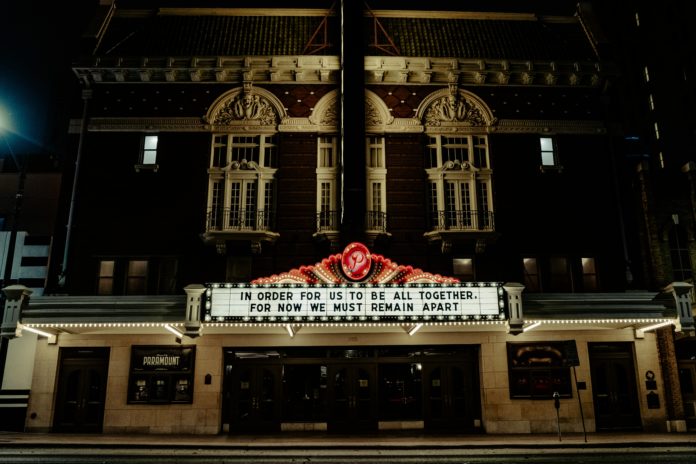As a pandemic ravages and reshapes the world around us, an inevitable question for us here at Urbānitūs is, how will it remake Austin and other cities? Or asked differently, in the language of the authors you’ll meet here in this new project we’re calling the “Renewal Series” how might Austin rise to the inescapable challenge of renewing civic life, culture and institutions toward the other side of this pandemic called COVID-19?
When we launched Urbānitūs our mission was clear if abstract: the chronicling of the way our city, a leader among an emerging new breed of creative and innovative global cities, is stepping up to a new governance challenge. This is the imperative to fill the vacuum left by increasingly dysfunctional nation states and national governments.
Now, of course, our mission could not be more concrete. For COVID-19 has accelerated at warp speed this trend that inspired us and that is thrusting cities to the forefront of global governance. Somewhat hauntingly, here’s how we described that mission in our very first article last October:
“… in an era when the unit at the top of the governance spectrum, the nation-state, is struggling to cope with the challenges of interdependency – climate change, mass migrations, pandemics to name a few – the burdens fall back on those actors with the broadest shoulders… Which means that mayors, council members, commissioners, local activists and ultimately the citizens they serve are stepping into a new role. And roles.”
There is much that is being said, and that must be said, about how the virus causing COVID-19 is forcing a vast reorganization of everything from health care to use of online technologies, to management of supply chains, to the global political order itself. Some see, beyond the deep misery of the moment, opportunities to reimagine use of climate changing fossil fuels or a post-partisan era of national solidarity. Others, however, see a coming era of opportunists, of growing populism, authoritarianism and Big Brother surveillance. Both, in fact, may well prove right.
But our lens at Urbānitūs is different. We are examining the same roiling sea, but from an opposite shore.
For while the COVID-19 crisis is sparing no space on earth, with its reach already touching an indigenous tribe deep in the Amazon, it’s important to keep in mind that it is in the main a scourge of cities. It began in China’s industrial Wuhan, and spread to other industrial places like Detroit and Milan, connected through global supply chains. It quickly found its way to dense megacities, like New York, London and Istanbul whose diverse populations are pulsating flows of commerce, commuters and travelers. The next were tourist destinations, from the ski havens of Italy, Switzerland and the Colorado Rockies to the tourist meccas of Miami or New Orleans.
National governments, including ours, are of course minting the urgently needed coin of economic stimulus, now at $2.6 trillion and counting in the United States. Many governors are cutting heroic profiles to “flatten the curve,” equip overwhelmed hospitals and roll out testing. Manufacturers are doing their bit to retool for ventilator production as pharmaceutical companies, universities and medical researchers are setting aside rivalries to speed vaccine trials at a pace unseen in history.
But cities are where the death race between our civilizational smarts and the virus’ endlessly mutating genes will be won – or lost. Had Austin not taken the decisive action to cancel the music festival SXSW on March 6, our death rate might be comparable to that wrought by Mardi Gras in New Orleans, a city now with the worst death rate in the country. San Francisco, the second most densely populated city in the country, was the first to issue a “shelter in place” order on March 16. The city’s 22 deaths as of this writing are tragic, but in stark contrast to the numbers they might have been. And when a meat packing plant in South Dakota became the radiating core of rural COVID-19 infection, with more than 600 cases and one death, it was the mayor of Sioux Falls who battled the plant owners and finally shut it down.
The even more important tasks of cities, however, are those yet to come. They will be the architects of the social, commercial and civic order to follow. Which is why we’ve asked a number of leaders in our community to share their vision for what this will look like.
As we begin over the coming week, East Austin community activist Susana Almanza hopes that the word “resilient” will become more than a political slogan and we can move quickly to resiliency’s actual building blocks of economic, educational and environmental justice. Robert Brehm, a recent graduate of the LBJ School of Public Affairs, now a candidate for a master’s in public health, sees local government as the exemplar of science-based decision making. Austin lawyer Paul Huggins challenges the high school class of 2020 to ponder not what the virus is doing to them, but what it is doing for them. Smart cities advocate and seer Chelsea Collier believes Austin is digitally “smart,” but not half as smart as it must be to rise to the post-virus challenge. And technology entrepreneur Brett Hurt envisions Austin and its ethos as one starting point for a “New American Dream” to emerge beyond the pandemic. Their perspectives are diverse, and they are all the authors’ own.
More deep, thoughtful and original insight from across our city is in motion. Including from other co-founders Bryan Jones, Jeremi Suri and Barry Kahn who will be writing in the coming days along with others to be introduced. We’ll share it all as the COVID-19 crisis unfolds, along with this ongoing Renewal Series, our community effort to envision a very different urban future beyond the pandemic. Here in Austin and elsewhere.
If you like what you’ve been reading, please click here to subscribe and we will send you updates and our newsletter.







Fantastic opening piece for a valuable and necessary exploration of our post-COVID future. Well done!
World War II had many positive externalities for the United States, for certain groups of people, the country as a whole, and the environment. African-Americans and women would lead in social movements and America’s shores were opened up to more immigration. America boomed economically. Environmental movements were set in stone. Congress executed laws that were bi-partisan, probably because 75% had served in the war.
My point, is that hopefully some good can come out of this pandemic. I don’t think World War II was a good thing, but maybe we handled it well? Or came out lucky and let the USSR and British do all the work?
What a straightforward opening statement! I am excited to read all those articles and more..
Dear Davide,
I hope other cities and news outlets will follow your example to publish what will be like after Cov 19.
The ottimism you are presenting to our world would have made Schopenhauer review his pessimistic philosophy of the character that humanity can forge.
Enjoyed this piece and look forward to reading more in the series.
This piece raises a number of intriguing aspects, most notably its perspective “from an opposite shore.” As Robert Kaplan pointed out over 20 years ago in an Atlantic survey of the western U.S., that the focus for societal management will take place at the county or city level of governance – armed, as it were, by the exploding capabilities of information technologies that put everyone “in the know.” The days when Washington was the locus of information are long gone as today’s local administrator has access to information flows unimaginable only a few decades ago. The series is posing a counterfactual as what we think may be posed by future analysts who will be looking back at the Covid-19 renewal and asking “what if?” The key here is how we deal with “unknown unknowns” and whether that paralyzes action or stimulates proactive thinking and risk taking. Already we see and perceive wide-ranging changes. How quaint those hotly contested media debates over ACA mandates now appear. Panaceas such a technology-based distance learning are meeting a new reality as are conference planners who now face a new reality as would be attendees apply a whole new calculus about why people would decide to go to conferences and how these meetings should be organized and presented. Small examples of widespread re-examinations of anticipations of what should we be thinking about and what are we missing today – that tomorrow’s planners will be asking “what if” about?